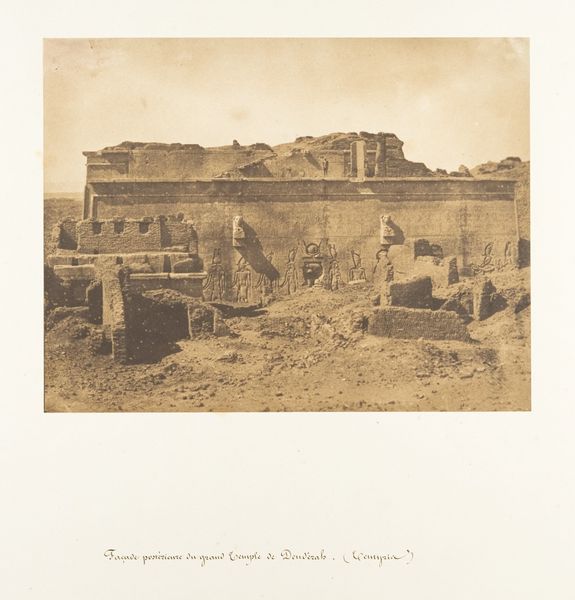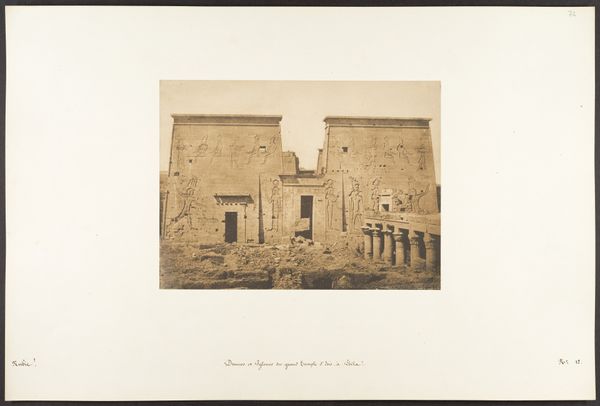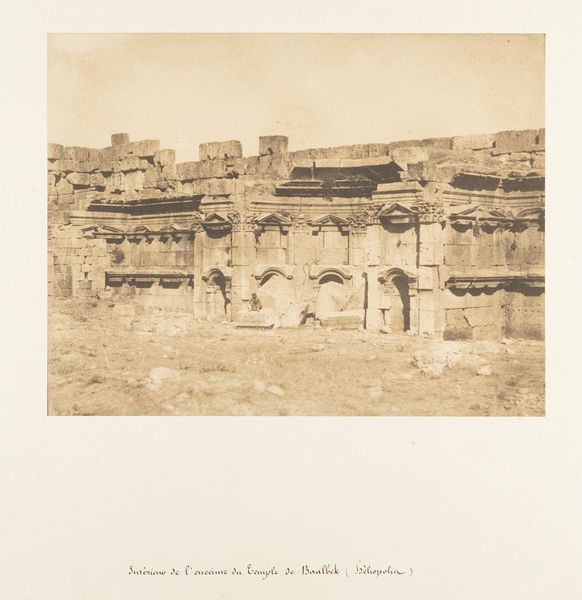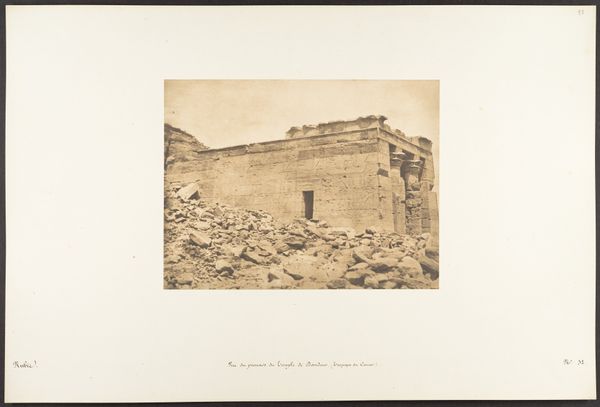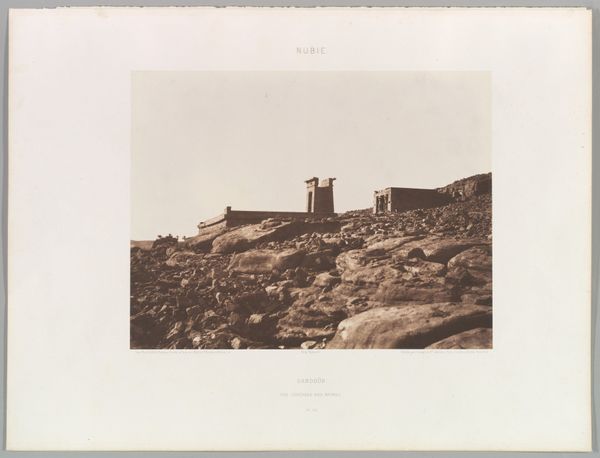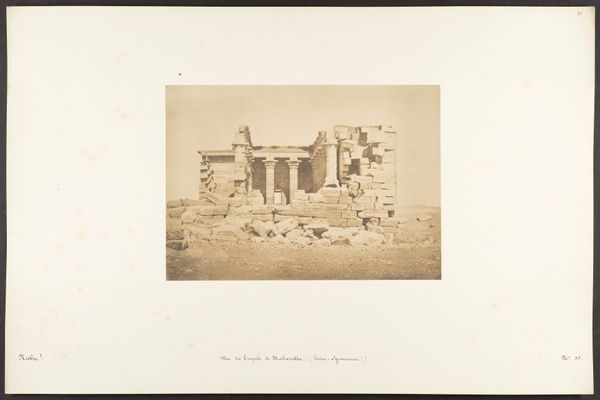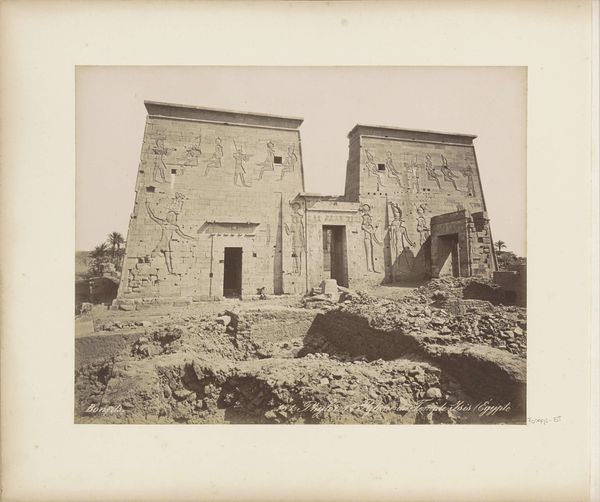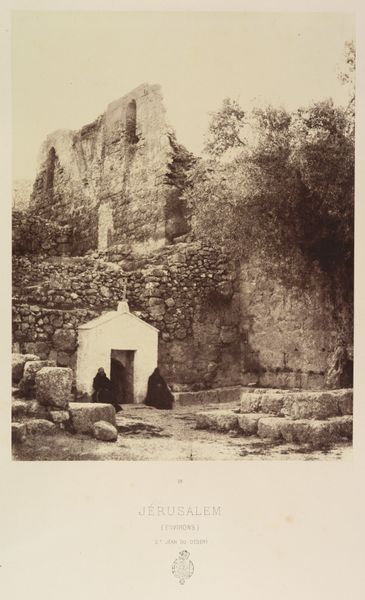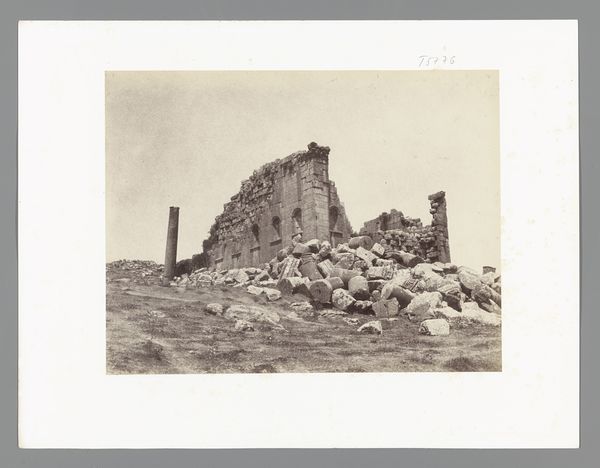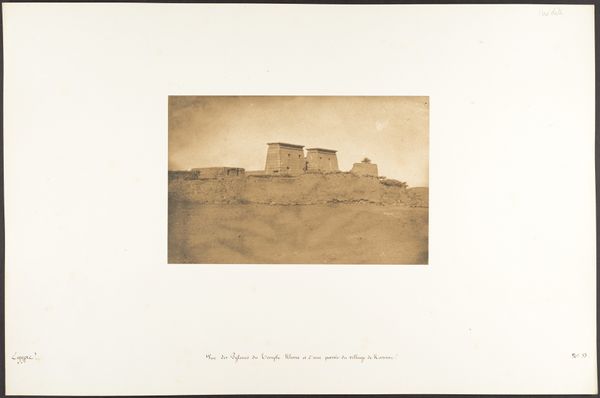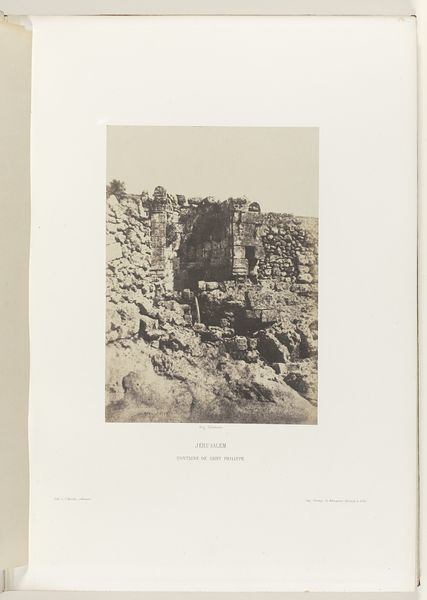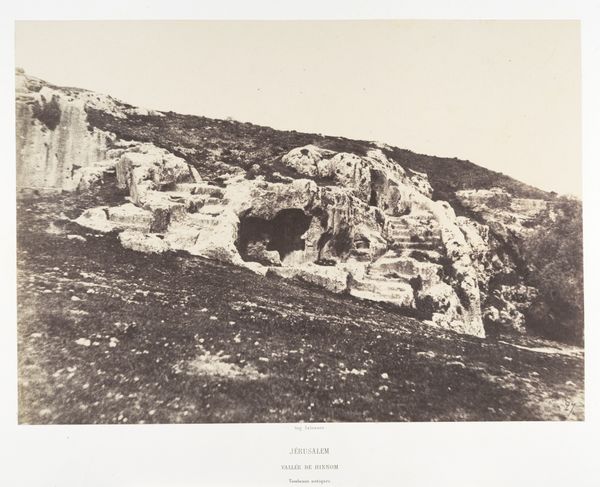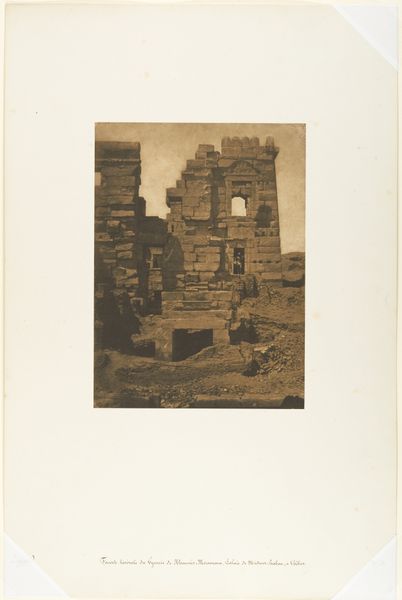
Hypètre d'Athor, sur la Terrasse du grande Temple de Dendérah (Tentyris) 1849 - 1850
0:00
0:00
photography, albumen-print
#
landscape
#
ancient-egyptian-art
#
photography
#
ancient-mediterranean
#
history-painting
#
albumen-print
Dimensions: Image: 6 7/16 × 8 3/8 in. (16.4 × 21.2 cm) Mount: 12 5/16 × 18 11/16 in. (31.2 × 47.5 cm)
Copyright: Public Domain
Editor: Here we have Maxime Du Camp’s "Hypètre d'Athor, sur la Terrasse du grande Temple de Dendérah (Tentyris)," an albumen print made between 1849 and 1850. It's striking how this early photograph captures the scale of the temple ruins, but there's also a staged quality. What's your take on this? Curator: I’m drawn to the albumen print itself as a material object, revealing much about 19th-century modes of production and consumption. The choice of albumen—derived from egg whites—for the photographic process speaks to a specific type of labor involved in image creation. Consider, too, how the final product was then disseminated, circulated, and ultimately consumed. The production itself hints at a social hierarchy: Who was consuming this image, and whose labor created it? Editor: That’s fascinating, I hadn’t considered the social aspects tied to the materials themselves! How would that connect with what is represented in the image? Curator: Precisely! Think about the act of documenting ancient Egypt at this particular historical juncture. Was this merely a quest for knowledge, or did it reflect broader European interests in appropriation and control? It forces us to look beyond the surface of what’s depicted, leading to consider who financed the expeditions, and what interests were served by creating these images. What power structures are at play, in the production and reception? Editor: So, the materiality points towards the social dynamics and the power dynamics between Europe and Egypt in the 19th century? Curator: Absolutely. We must remain critical and reflexive when examining visual culture: photographs like these, once seemingly objective records, become powerful symbols of cultural exchange and control when understood from a materialist perspective. Editor: This has given me a completely different way of viewing this photograph; now it's much more than just a landscape photograph. Thanks for that new perspective!
Comments
No comments
Be the first to comment and join the conversation on the ultimate creative platform.
